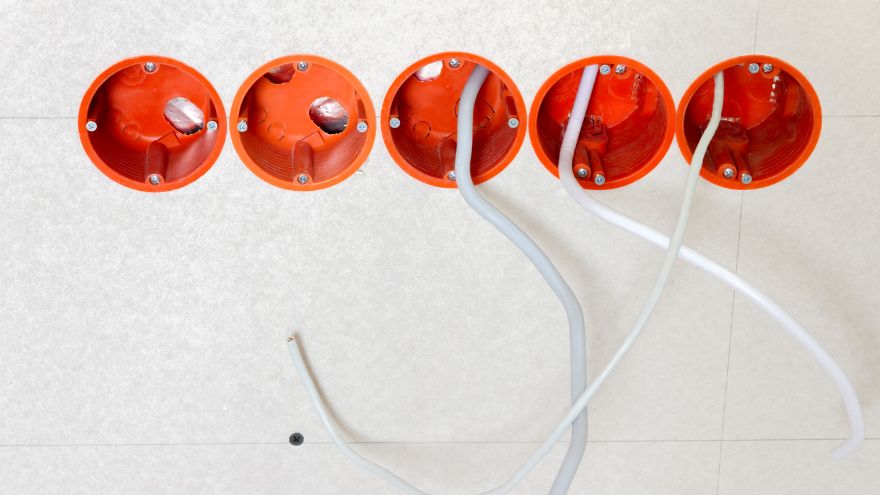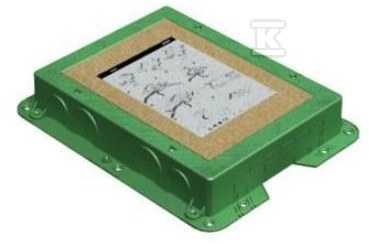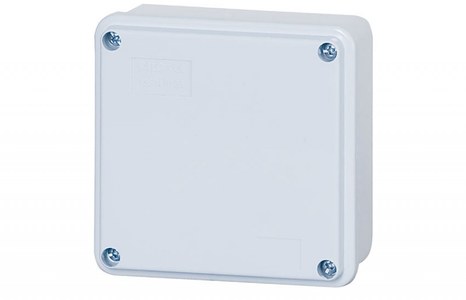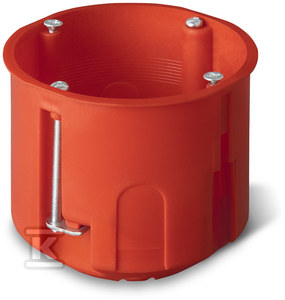In addition to ensuring safety and reliability, the electrical box should also make it easier for the electrician to install the internal elements of connectors, branches and sockets. Even though the cans themselves are not structurally complicated. Their proper selection should depend on the specific application. What types of electrical boxes are there? What should you pay attention to when purchasing an installation box ?

Check out electrical boxes at the Onninen wholesaler
Types of electrical boxes
The electrical (installation) box is one of the elements of electrical equipment. It is a plastic container, mounted in or on walls.
 They are a certain exception floor boxes . They are installed in public buildings, especially in open space offices, where all cabling is usually laid under the floor surface.
They are a certain exception floor boxes . They are installed in public buildings, especially in open space offices, where all cabling is usually laid under the floor surface.
The number and method of mounting electrical boxes is determined already at the installation design stage. Their location determines the safety of users, their comfort and, above all, the ability to use electrical devices in each room.
The most popular types of electrical boxes:
Surface-mounted box
 The surface-mounted box is mounted on the wall. The material from which it is made is characterized by greater durability and resistance to mechanical damage. The design properties of the surface-mounted box significantly facilitate technical and service operation. Due to the fact that surface-mounted boxes are visible, they are installed mainly in facilities where aesthetic considerations do not play an important role (industrial plants, workshop rooms, technical buildings, basements, garages).
The surface-mounted box is mounted on the wall. The material from which it is made is characterized by greater durability and resistance to mechanical damage. The design properties of the surface-mounted box significantly facilitate technical and service operation. Due to the fact that surface-mounted boxes are visible, they are installed mainly in facilities where aesthetic considerations do not play an important role (industrial plants, workshop rooms, technical buildings, basements, garages).
Flush-mounted box
 The flush-mounted box is placed inside the wall, which makes it invisible. The exception is the cover that masks the inside of the container, and the rich color palette allows you to choose a product that matches the color of the interior of the room. Flush-mounted box requires prior preparation of the wall in the form of precisely sized holes. For this reason, installation of boxes is usually carried out during the construction of a renovation or reconstruction facility.
The flush-mounted box is placed inside the wall, which makes it invisible. The exception is the cover that masks the inside of the container, and the rich color palette allows you to choose a product that matches the color of the interior of the room. Flush-mounted box requires prior preparation of the wall in the form of precisely sized holes. For this reason, installation of boxes is usually carried out during the construction of a renovation or reconstruction facility.
How deep should an electrical box be?
The installation depth of the electrical box should correspond to its standardized dimensions. In other words, the dimensions of individual types of installation boxes remain unchanged in percentage terms. A can with a diameter of 66 mm is approximately 42 mm deep. Deepened boxes are also commercially available, the dimensions of which are as follows: length/width/height: 65 mm / 65 mm / 63 mm.
The dimensions of electrical boxes should include:
Destiny;
Assembly method;
Installation location;
Cable type;
Purpose of installation;
Conditions in which the box will operate.
When drilling a hole for a can, it is recommended that the diameter of the hole saw be larger by approximately two millimeters on average. This will allow you to freely manipulate the box to adjust its position to the cables installed under the plaster. When working on a raw wall, you should take into account the thickness of the plaster, which usually ranges from 5 to 7 mm.
Multiple cans
A multiple can is characterized by several interconnected chambers, in which - depending on the box you have - you can install from two to even five sockets or switches. Thanks to this solution, there is no need to install several separate boxes, and the entire structure is stable, comfortable and aesthetic.
The speed of installation is also important. The electrician does not have to pay attention to the distances between compartments or the uniform depth of individual holes. Perforations around the holes for the cables to pass through the set facilitate installation. Reusable cans work well wherever work efficiency and aesthetics are important.
Also available for sale installation boxes characterized by an unusual composition of the material from which they are made and application ( halogen-free cans , external boxes ). Please follow ours subsequent publications , the reading of which will help you choose the most appropriate equipment and make it easier to perform difficult work related to the design, installation and operation of electrical lines.